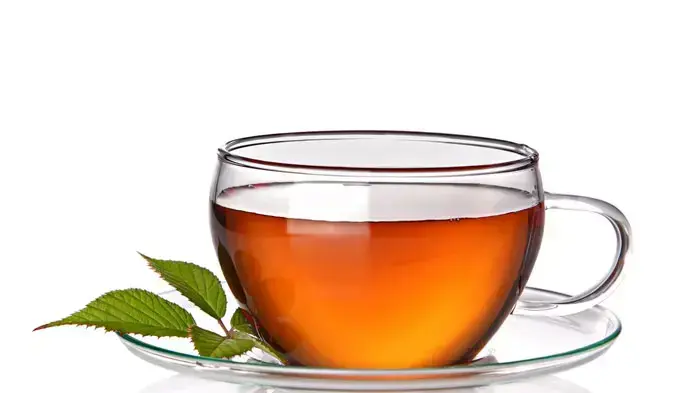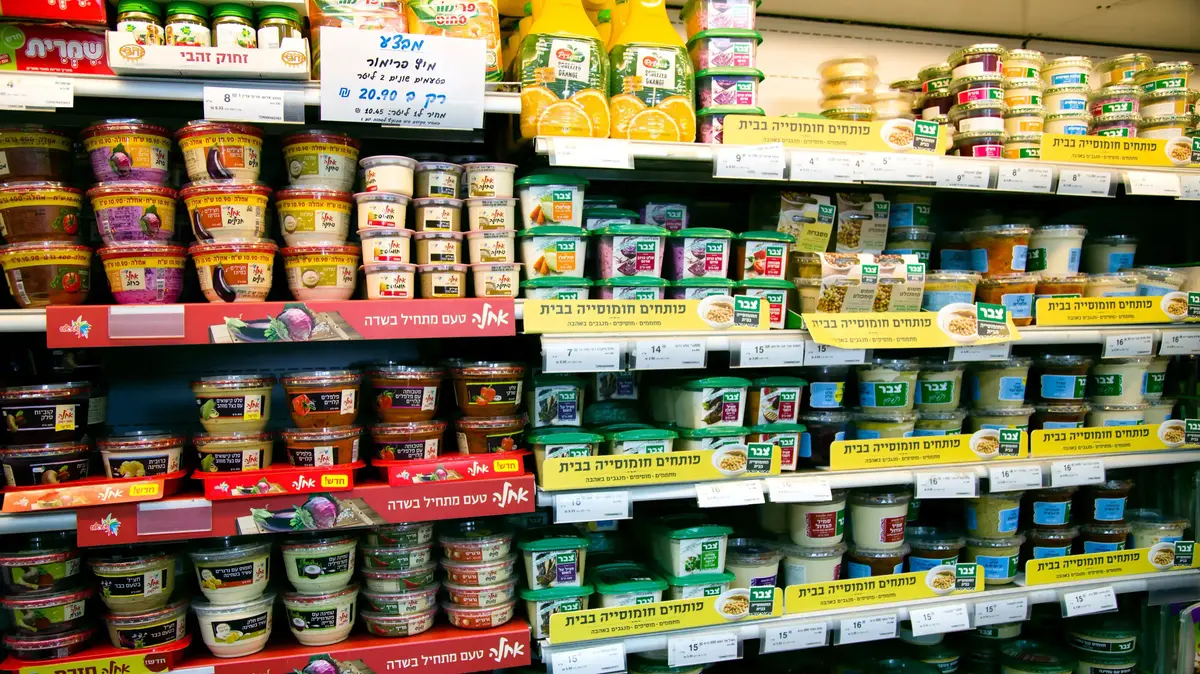A cup of tea: big price differences in Israel, unimaginable price differences compared to Europe (Photo: ShutterStock)
Israel is not known for its tea consumption culture, but at the same time - tea consumption is increasing year by year.
The image of tea as an adult drink is disappearing and a younger generation is consuming more and more of it, as part of the health trend.
It used to be a matter of tradition: in the early 1990s, the consumption of tea drinks in Israel skyrocketed significantly due to the large number of immigrants from the CIS and Eastern Europe, who came from cold countries where they tend to drink more hot drinks.
However, the consumption of tea is not necessarily limited to cold countries, from India and Pakistan to Arab countries there are quite a few tea consumers.
Despite this, the equation is clear: in countries where the winter is colder, increased consumption is recorded.
Last summer's novelty, peach-flavored Vysotsky.
The brand dominates the market with a hand in hand (Photo: Wysotsky)
The market in Israel
The tea beverage market in Israel generates more than NIS 250 million a year, which when it registers an increase even in the warmer months of the year as well as in the hot market, that of the cafes and restaurants.
Despite the relative abundance of brands in recent years, the Wysotsky company controls 76% of all tea market shares in Israel.
Which hot drink do we prefer?
From the consumption data, it appears that more than 70% of all consumers answer that the drink they usually drink is coffee, and in contrast, about 65% of all consumers testify to the consumption of tea.
Coffee still wins, but between the years 2017-2018, 80% testified to coffee consumption and only 58% testified to tea consumption.
Which brand do consumers prefer?
There are not many tea brands in Israel, although the marketing chains have begun to try to leverage the strength of their brand through tea brands in order to present consumer attractiveness, the strongest and leading brand in Israel is the Wisotsky brand with which consumers are familiar with 93%.
It is followed by the Lipton brand imported by Unilever which achieved almost 80% of consumer recognition.
The international Pompadour brand marketed by the Shastowitz company presents a figure of about 40% consumer recognition, which is a significant leap compared to previous years.
Ram Dagan, the national sales manager at Shastovich
explains the jump in attractiveness in price compared to the competitors.
We checked the price differences for the consumer between the Wisotsky brand and the Pompadour brand and identified a gap of more than 30% for the consumer, that is - there is probably truth in what he said.
The Twinings brand marketed by the Seeds company shows a consumer recognition of 13% and this is mainly recognition from overseas countries.
The Ahmad brand, marketed by the Tomer company, is well known in European countries, but achieves only about 7% in consumer recognition in Israel.
The brand presents price differences that are sometimes 560% lower than comparable brands.
Avishai Eisen, CEO of the Tomer company
: "Despite presenting an attractive price over the years with a quality product and international consumption, the Israeli consumer is still influenced by brands and advertisements and thus pays almost double for similar products - and it's not just the tea products.
" Soon to Carrefour) presented an exposure to a tea box that made all the actresses in the category raise an eyebrow with a tea box at a consumer price of 6.90. It disappeared from the shelves and in its place 20 tea bags appeared at prices of NIS 9.90 and NIS 10.90. When is the peak of consumption
?
The months of December and January are the strongest months in tea consumption among the months of the year, this year we are expecting a change due to the late winter which is now at its peak, so it is expected that this year's data will be during the months of January and February, over 60% of the sales of tea products are drained to the months of November to February.
More in Walla!
A smart test detects an increased risk of stroke - now on special sale
Served on behalf of Shachel
Crazy price difference.
550% (Photo: Daniel Malachovsky)
What is happening in Europe?
We examined two marketing chains in the discount segment: the Aldi chain in Berlin versus the Sycamore (Rami Levy) marketing chain in Jerusalem, and we modeled prices of 25 tea bags with mint (or peppermint) in Berlin, versus the price that would be paid for the Wisotsky brand in the Rami Levy chain.
The difference reaches 550%. The price in Berlin is 0.65 cents compared to the price in Israel 4.28 or in shekels: NIS 2.50 compared to NIS 16.50 for a similar product.
CBC's Fuse T ("Coca Cola").
The most popular brand in Israel in the iced tea segment (Photo: Jan Verbum)
The tea is cold, the price is boiling
The increase in the prices of sugary drinks did not spare the iced tea.
The well-known brands in the local market are Fuse Tea of the Central Beverage Company (Coca Cola), Spring Tea of Yepaura, Nasty and Arizona marketed by Tempo.
The Fuse Tea brand takes about 80% of the iced tea market. The Spring Tea brand achieves 11% and Nasty with a 9% market share.
The prices per liter of drink show significant differences in this segment as well: the average price per liter of the leading brand Fuse Tea is 6.30 NIS per liter compared to the price of Spring Tea whose average price is 4.80 NIS per liter and the price of Nasty is between the two: 5.20 NIS per liter.
In other words: the iced tea market is less than 10% of the hot drinks market and a glass of iced tea still costs the consumer twice as much as a cup of self-made tea.
Gota's opposite: actually two chains that are considered relatively cheap, turn out to be more expensive when it comes to tea in our test (Photo: Daniel Malachovski)
We reviewed 34 tea products in seven leading marketing chains and checked what the difference between the chains is and where you will find the cheapest tea basket:
we also checked the basket in the AM:PM network and discovered that the urban consumer will pay a difference of more than 40% for the tea basket.
The sample shows different data from the surveys of the total basket and we see that the two chains that are considered cheap, Rami Levy and Osher Ad, present a relatively expensive tea basket that reaches a gap of more than 18%.
The author is the CEO of the Retail Research Institute.
Based on the reports of the marketing chains to the website of the Ministry of Economy and the Pricez system for the date 02/12/2023
Of money
consumption
Compare prices
Tags
tea
Rami Levi
Vysotsky
Shufersal
Yohannoff
victory
approved by
Fuze Tea








